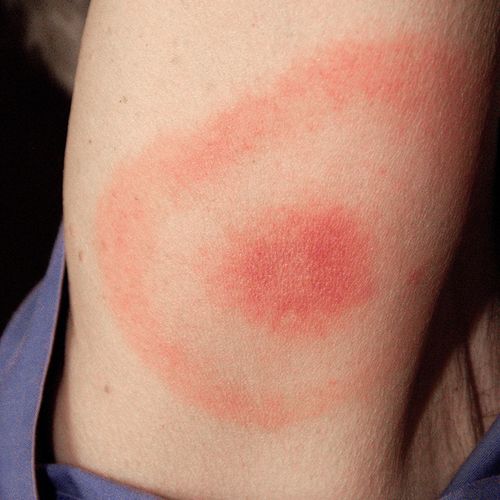Scientists have gleaned new insights into how the bacteria that causes Lyme disease invades the human body, a finding that could help lead to new ways to treat the tick-borne illness.
The Study
In a five-year study, researchers at New York Medical College tracked 213 initially untreated adults who had erythema migrans—the telltale bull's-eye rash that is the most common clinical feature of Lyme disease.
"If Lyme disease stayed in the skin it would be a completely different and rather inconsequential infection—but it doesn't," says study leader Dr. Gary P. Wormser, professor of medicine, director of the division of infectious diseases and vice chairman of the department of medicine.
Instead, the causative agent of Lyme disease can spread from the bite site through the blood to distant sites such as the brain, heart and joints, he says.
Wormser's team sought to determine when the Lyme disease bacteria invades the bloodstream, as well as how many patients experience bloodstream invasion and who might be most vulnerable.
Among the participants in the study, bloodstream invasion occurred in 93 people (43.7%). These people displayed more symptoms and were more likely to have multiple skin rashes than patients who did not have bloodstream invasion, he says.
But some of these 93 patients had no obvious symptoms of Lyme disease, demonstrating that clinical features alone cannot be used to determine the presence or absence of bloodstream invasion, the researchers say. Younger patients and those who had a previous history of Lyme disease were somewhat protected from bloodstream invasion.
"The high rate, early onset and prolonged duration of risk for bloodstream invasion probably explain why untreated patients with erythema migrans often develop complications distant from the tick bite location. Older patients without a past episode of Lyme disease are at particular risk," Wormser says.
Ways to Avoid Lyme Disease
Ticks favor moist, shaded environments, especially areas with leaf litter and low-lying vegetation. People who live or work in areas surrounded by tick-infested woods or overgrown brush are at risk of getting Lyme disease. Those who work or play in their yard; participate in outdoor activities such as hiking, camping, fishing and hunting; or work as landscapers, or in forestry, wildlife and parks management, may also be at significant risk.
Always check yourself and your children for evidence of ticks or tick bites on the skin.
If you're likely to be in tick-infested areas, the Centers for Disease Control and Prevention (CDC) suggests…
- Wear light-colored clothing so that ticks can be spotted more easily and removed before they attach themselves.
- Wear long-sleeved shirts and tuck pants into socks or boot tops to help prevent ticks from reaching your skin.
- Wear high rubber boots because ticks are usually located close to the ground.
